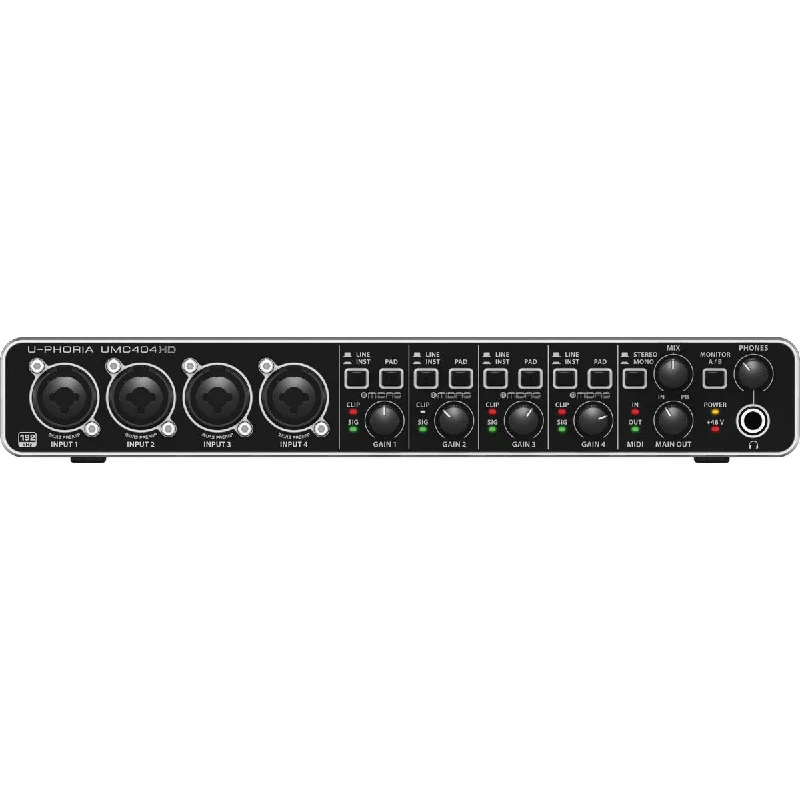Behringer's mission is “to help musicians fulfill their dreams with life-changing products at affordable prices.” The U-PHORIA series interfaces are a perfect example of Behringer’s mission in action, helping to fuel the passion and creativity of today's home recording and broadcast enthusiasts with affordable audiophile performance quality.
Not long ago, the idea of a home studio rivaling a professional multitrack recording studio was a distant dream, given the exorbitant costs involved. However, the 1990s saw a revolution with the rise of high-quality, lower-cost digital recording platforms, marking the birth of the home studio era. Behringer’s U-PHORIA audio interfaces have played a pivotal role in this revolution, making professional-quality, broadcast-worthy home recording an affordable reality. Perfect for capturing new song ideas, podcasting, steaming background tracks, or producing career-launching hits, U-PHORIA is your gateway to the digital domain. With 6 unique, high-quality, feature-laden models to choose from, Behringer offers a U-PHORIA series interface that’s affordable and perfectly outfitted for your unique needs.
The Behringer U-Phoria UM404HD 2X2 includes everything you need to record professional-quality audio on your MAC or PC. Like every other I/O in the U-Phoria series, it comes with free downloadable Traction software. It’s also compatible with Avid, Pro Tools, Ableton Live, Steinberg Cubase, and every popular software platform for directly recording with your favorite DAW. The UMC404HD is one of the high-end offerings in the U-PHORIA series. Yet, it’s priced far more affordably than you'd expect to pay for lightning-fast 24-bit/192 kHz 4x4 simultaneous high-resolution streaming, 4 state-of-the-art Midas preamps, ultra-low latency USB, and Midi I/O, and multiple playback and monitoring options.
You’ll find 4 XLR-1/4” combo inputs on the front panel with optional phantom power and state-of-the-art Midas preamps for outstanding sound quality and compatibility with dynamic and studio condenser mics, line-level and high-z sources. Each channel features an independent gain control with an LED clipping indicator, instrument/line selector, and pad for taming high-level input signals. A separate section features a variable gain knob for stereo or mono mix control monitoring, a robust headphone output jack with variable volume control and A/B monitor selector, and a primary output level control. The rear panel features a USB port for computer connectivity and power, plus MIDI in and out plus individual inserts for each channel for adding analog effects. Additionally, each channel has independent output on both 1/4” and RCA connectors for zero-latency monitoring while recording.

